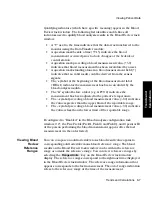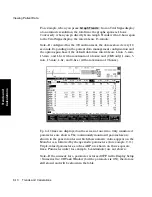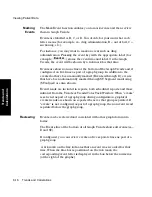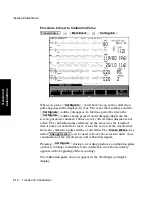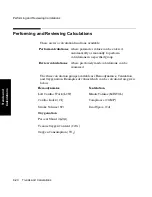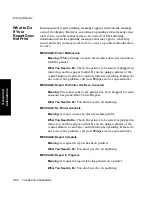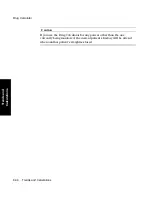
Performing and Reviewing Calculations
8-20 Trends and Calculations
Tr
e
nds
a
nd
Calcula
tion
s
Performing and Reviewing Calculations
There are two calculation functions available:
The three calculation groups available are Hemodynamics, Ventilation,
and Oxygenation. Examples of values which can be calculated are given
below.
Perform calculations
where parameter values can be entered
automatically or manually to perform
calculations in a specified group
Review calculations
where previously made calculations can be
examined
Hemodynamics
Ventilation
Left Cardiac Work (LCW)
Minute Volume (MINVOL)
Cardiac Index (CI)
Compliance (COMP)
Stroke Volume (SV)
Dead Space (Vd)
Oxygenation
Percent Shunt (Qs/Qt)
Venous Oxygen Content (CvO
2
)
Oxygen Consumption (VO
2
)
Summary of Contents for M1165
Page 12: ...Responsibility of the Manufacturer xii ...
Page 62: ...Using an ITE Display 1 40 The CMS and V24 and V26 Patient Monitors ...
Page 74: ...Attaching the Patient 2 12 Getting Started Getting Started ...
Page 172: ...Alarm Setup 5 16 Alarm Functions Alarm Functions ...
Page 228: ...Loading Paper 6 56 Recording Functions ...
Page 236: ...Admitting a Patient 7 8 Admit Discharge End Case Admit Discharge End Case OR Mode ...
Page 238: ...Admitting a Patient 7 10 Admit Discharge End Case Admit Discharge End Case endcase tif ...
Page 274: ...Drug Calculator 8 36 Trends and Calculations Trends and Calculations ...
Page 299: ...Data Transfer Module Data Transfer 10 3 Data Transfer M1235A CTS DTM CMS CMS V24 V26 ...
Page 388: ...Performance Assurance Checks 13 22 Maintenance Maintenance ...


